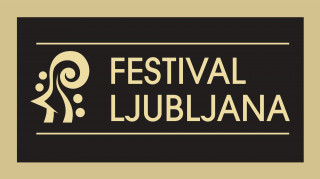Opening of the exhibition: 14 July 2023 at 12.00 pm, Knights’ Hall, Križanke.
Participants:
Ado Furlanetto, Italy
Zdravko Milić, Croatia
Brad Downey, United States of America
Guangxu Zheng, China
Karmen Bajec, Slovenia
Nina Stopar, Slovenia
Breda Sturm, Slovenia
Pšenica Kovačič, Slovenia
Today, visual art and especially visual perception, are at something of a historical turning point. Anyone with a smartphone can be a visual artist with the ability to publish with a few clicks. The relation triggered by this possibility has also radically changed our perception of the world. These revolutionary devices, now firmly a sine qua non, have practically become a compulsory human companion that life is hard to imagine without. This evolution of the telephone, which is now centred more on the visual world, i.e. on sight or vision, than on hearing or the ear, has radically changed not only our habits and perceptions, but also the language of communication, and above all visual language – the language of photography. While in the past it took some time to see results because almost no machine could process visual data instantly, nowadays anyone with a smartphone can produce and publish their masterpiece online in an instant. So it is not just the number of artists that has changed or increased enormously, but the mechanism for valorising these images has also changed radically. Expertise has disappeared. The opinion of friends or the number of “followers” is more important. Social networks have assumed such a strong role, and become so powerful and influential, that they have radically changed the visual component of information.
Visual art today is also slowly going in the direction of so-called “liking”. In reality, this process began in the 1980s with the predominance of globalisation, and the bizarre competition and desire for success, visibility and capital accumulation. The role of the artist changed. The role of the curator has come to the fore because the market has its own demands. Nowadays, major biennial exhibitions and art fairs are important, such as Artefiera in Bologna, Miart in Milan, similar events in Verona, Turin, London, Paris, New York, etc., and many others practically all over the world. Indeed, it is these events that regulate global market flows and tastes. New art museums are also springing up around the world, inspired by the ideas put forth by world-famous names in architecture. In this whole new reality, the artist has completely disappeared into the background. If we just look at the Venice Biennale or Documenta, they are best known and identified by the names of directors or curators – Massimiliano Gioni, Francesco Bonami, Robert Storr, Christine Macel, Okwui Enwezor or Cecilia Alemani. We hardly hear about the exhibiting artists. The director or curator presents their poetics by selecting artists who confirm their concept. The latter is more important than the artworks or the artists who created them. Visitors are becoming increasingly governable. The education process and the flood of information in the media train us to be followers rather than protagonists who think for themselves.
The Covid period also changed our views and habits to a large extent. In education, for instance, no one ever imagined that teaching and learning could take place remotely. We could not have imagined the possibility that exhibition centres and museums would be closed to visitors for so long. Only the return of so-called “normality” has made us realise that many rules or concepts in the art world will have to be redefined. No one really knows what the new rules of the “game” will be. We can foresee all sorts of things, but we do not know what lies ahead and can only hypothesise about it. But we do know that art has existed since the dawn of time. It is essential that humans remain humans. In The Little Prince, Antoine de Saint-Exupéry wrote “Whoever wants to see must look with the heart”. And smartphones or selfies can’t help us here. A work of art that one can recognise as such, and feel in one’s heart because it gives something, must contain the knowledge, the training and the soul of the one who created it. It must reflect an imaginary world where everything is possible, nothing realistic yet everything real. Visual art and its language of expression are eternal. It will continue to exist in spite of all the possible transformations and mutations brought about by new technologies, as long as there are humans in the world.
Eight of us artists who believe in this, and who live and work in this sense, have been invited to participate in the traditional International Fine Arts Colony, which the Ljubljana Festival is holding for the twenty-sixth time in Ljubljana’s Križanke. The Colony offers artists the opportunity to create in truly ideal conditions. As every year, four academic painters from abroad and four from Slovenia will participate. Once again this year, we will be joined by the well-known multimedia artist Lado Jakša, who will be with us for the entire week. At the end of the art colony and the opening of the exhibition, he will present his view of their work and the creative process through his artistic perspective in a musical-visual way.
I wish the artists much creative inspiration and pleasant socialising, and hope that Ljubljana will enchant this year’s artists as much as it has their predecessors.
Tomo Vran, selector



